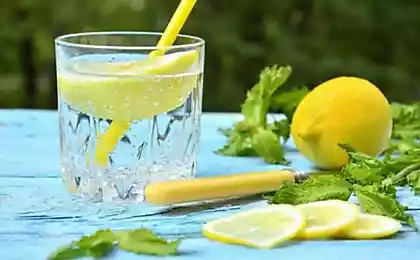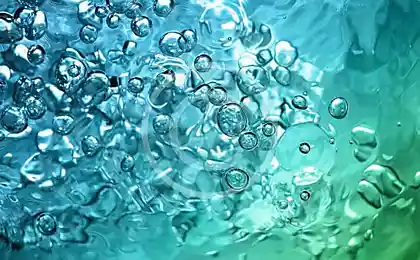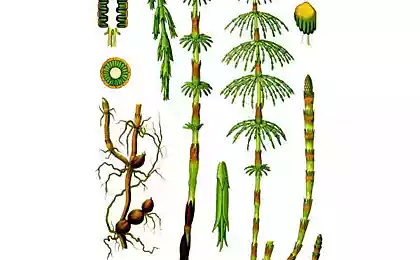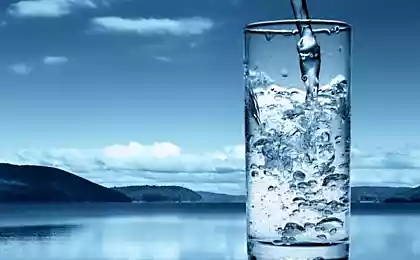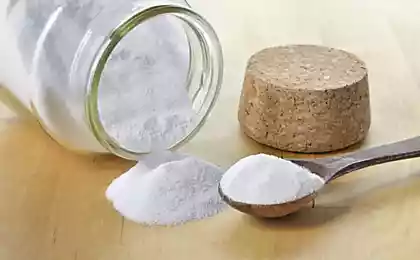643
Kidney stone: WHAT to do
Nephrolithiasis or nephrolithiasis (from the Greek "nephrotoxicity" kidney "Litos" — stone), characterized by the formation of sand and stones in the kidneys.
Since their creation lead salts contained in the urine, another name - kidney stones (urolithiasis). Actually, the kidney disease is the most common form of manifestation of urolithiasis.
Nephrolithiasis is very common. According to statistics, seven out of ten people middle-aged and older have a kidney or in the bladder if not stones, then sand.
Why are there rocks?
This files most often kidney stones are formed as a result of violations of metabolism and function of the endocrine glands that regulate water-salt metabolism in the body. In the result, the urine is oversaturated with salts, and they precipitate as crystals, which gradually formed stones.
The stones formed in the beginning in the kidneys, can move into the ureters and into the bladder. Directly in the bladder stones are formed much less frequently.
In addition to metabolic disorders, the development of nephrolithiasis contributes to a number of factors:
There are also carbonate and xanthine stones. There are also so-called mixed stones, consisting of salts of different acids.
A relatively small group consists of soft rocks formed from protein and krakhmalopatochnyi products: fibrin, amyloid, conglomerates of bacteria etc.
Urate are found among the meat lovers, the assimilation of which the body is formed uric acid.Accumulation and leads to urate stones.
Vegetarians, for example, as recently established, suffer from kidney stones three times less. However, to completely exclude meat from the diet is not necessary, because the waiver does not guarantee getting rid of the stones. Doctors recommend eating no more than 100-150 grams of meat 5 — 6 days a week.
Phosphate stones are formed with the prevalence in the diet of lacto-vegetarian foods rich in calcium.
Sizes of stones vary widely: from a grain of sand to a hen's egg. Oxalate and urate grow slowly and rarely more than a nut. Phosphates and carbonates with a core of oxalate and uric acid increase in volume quickly. They usually form the largest, so-called Staghorn stones, filling a large cast of the internal cavity of the kidney (calyx and renal pelvis).
Composition stone need to know — because only in this case, the doctor conducts the direction of treatment and the patient understands the meaning of therapeutic and preventive recommendations for diet and lifestyle.
Stone movedFor a long time, kidney stones can does not manifest itself. The first sign of the disease — the emergence of pain in the lumbar region. The pain is usually aching, aggravated by exertion and especially when shaking.
Stone violates the outflow of urine from the kidneys and cause renal colic.
The attack of renal colic comes on suddenly. A sharp pain pierced the lower back and side abdomen. It is so strong that, no matter what position the person may assume, it becomes easier not.
Often the pain spreads to the hip, groin and suprapubic region, genitalia. Colic is accompanied by shortness of urination, nausea, vomiting, bloating.The nature and intensity of the pain of renal colic attack can only be compared with the myocardial infarction. The cause of torment — stone, which began its movement from the kidney and entered the ureter. Usually intense pain is caused by small-sized stones.
If the lower back occurs mild, dull pain, the culprit usually turns out to be large (Staghorn) stone that stood in the way of passage of urine.
Very often after an attack of renal colic the stones flow of urine. Unfortunately, not all and not immediately. The patient may have noticed in the urine admixture of blood. This is a result of injury due to sharp edge calcium oxalate stone to the mucous membrane of the urinary tract. Smooth stones, phosphates, hurt less.
Sometimes after an acute attack of renal colic and stone expulsion disease retreats for several years. Then it repeats...
Complication of kidney stones infection significantly complicates the course of illness. Pachciarek infection accompanied by pyelonephritis (inflammation of kidney pelvis). Another severe complication is kidney stones hydronephrosis — a persistent expansion of the renal pelvis and calyx of the kidney with atrophy of the tissues. As a result of development of pyelonephritis and hydronephrosis increased blood pressure — develops renal hypertension, possible excretion of pus (pyuria).
The most severe complication (though quite rare) is the development of chronic renal failure.
About 10 — 15% of patients with kidney disease in the diet, diet and a healthy lifestyle to avoid attacks of renal colic. They carry the disease is quite easy — the pain or moderate and tolerant, or none at all. Sand and pebbles (concretions) go out by themselves, quietly. However, if these "lucky" will not comply with the diet and some other recommendations, given below, to exclude the possibility of termination of the process of stone formation and development over time, chronic pyelonephritis is not possible.
How to diagnose kidney disease?To diagnose kidney disease is important to the description by the patient of the clinical picture of an acute attack of renal colic. After the attack, the doctor usually takes x-ray and ultrasonography (USG) of the kidneys and bladder and urine test. The urine analysis revealed red blood cells, the appearance of white blood cells, protein, crystals and ions of salts of uric and other acids.
The main method of recognition of stones in the kidneys and in the urinary tract remains a radiological diagnosis. At the review pictures, they can see quite well. However, soft stones do not delay x-rays and are invisible. To identify them used ultrasonic methods of research.
But they are not omnipotent as they can be used to identify only education size from 3 mm and more. Only the most modern devices allow you to see smaller stones.
Whatever the effectiveness of x-ray studies and ultrasound, do not another study - excretory urography, reliably determining the condition of the kidneys, urinary tract, their ability to perform their functions and specifying the location of the stones.
In case of doubt in diagnosis, the final word rests with computed tomography — probability of diagnostic errors after this will be significantly reduced.
How to treatment for kidney stones and how to prevent them?During an attack of renal colic take a warm bath or put a heating pad on your lower back, have antispasmodic and analgesic action (Nospanum, baralgin, analginum). If this does not help and the pain increases, it is necessary to call "ambulance".
The doctor relieves the pain more powerful analgesics, but also drugs.
Cropped renal colic and anti-inflammatory action fees medicinal plants, such:
1. The leaves of bearberry (10 g), grass knotweed (20 g), corn silk (15 g). The mixture pour 250 ml of boiling water and insist 15-20 minutes. Infusion take 1 / 4 Cup 3-4 times a day through 1 hour after a meal.
2. Seeds of parsley (15 g), anise (15 g), juniper berries (15 g), flowers of Lily of the valley (5 g), birch leaves (10 g). Prepare and adopt the same as the first collection.
Large stones used to removed surgically. Now, however, before resorting to surgery (or instead of surgery), performed the lithotripsy, ultrasonic, electromagnetic and other waves. This method is called lithotripsy. She is assigned to, if the attacks of renal colic are often, if nephrolithiasis is complicated by pyelonephritis and the self-discharge of stones it is difficult to count and finally, if the stones are too large, and the ureter is narrowed.
When conducting lithotripsy, the patient is placed in semi-prone position in the bathroom, and the doctor, a machine directs a beam of ultrasonic or electromagnetic rays to the point where the jewel is.
Under the action of shock waves, the stone is fragmented into small fragments, which are then displayed by conservative methods or go out by yourself.
Small stones (up to 5 mm in diameter) and sand are expelled from the kidneys and ureters with antispasmodic drugs, infusions and decoctions of medicinal herbs, physiotherapy, physical therapy and copious drinking.
If kidney stones do not cause pain or uncomfortable condition, usually limited to conservative treatment, not requiring surgical or instrumental intervention. Thus patients are strongly advised not to SuperCool, always keep warm waist, not to catch a cold, to avoid exacerbation of the disease and severe complications.
An important place in the conservative treatment and prevention of kidney diseases is balneotherapy with mineral waters on resorts in Essentuki, Zheleznovodsk, Pyatigorsk, Truskavets (Ukraine) and others In the conservative treatment the leading role of diet and medications that dissolve the stones, which, depending on the composition of the stones prescribed by a doctor.
General guidelines for diet:
One of the most popular and widely recognized medicinal plants used for the treatment and prevention of kidney disease, is field horsetail.
Seventy one million three hundred thirty four thousand one hundred ninety five
It is taken alone and as part of fees:
With timely prevention and proper treatment it is possible to live with kidney disease. However, it is impossible to relax: in violation of the diet and other recommendations stones can appear again and again. published
Author: Boris Bocharov, according to the article "kidney Stones. What to do?"P. S. And remember, only by changing their consumption — together we change the world! ©
Source: www.childneurologyinfo.com/health-text-diseases17.php
Since their creation lead salts contained in the urine, another name - kidney stones (urolithiasis). Actually, the kidney disease is the most common form of manifestation of urolithiasis.
Nephrolithiasis is very common. According to statistics, seven out of ten people middle-aged and older have a kidney or in the bladder if not stones, then sand.
Why are there rocks?
This files most often kidney stones are formed as a result of violations of metabolism and function of the endocrine glands that regulate water-salt metabolism in the body. In the result, the urine is oversaturated with salts, and they precipitate as crystals, which gradually formed stones.
The stones formed in the beginning in the kidneys, can move into the ureters and into the bladder. Directly in the bladder stones are formed much less frequently.
In addition to metabolic disorders, the development of nephrolithiasis contributes to a number of factors:
- Climatic factor. In hot climates people sweat more than people in the middle band. As a result, the body increases the concentration of salts, and can begin to form stones.
- Geographical factor. An important role plays the composition of the water in your area — hard water with a high content of calcium salts may contribute to the formation of stones in the kidneys and in the bladder. On the appearance of the stones is also affected by the lack of UV rays.
- The nutrition factor. Spicy and acidic foods increases the acidity of urine, which contributes to the appearance of the stones. This process can enhance the permanent lack of vitamins in the diet.
- Calcium intake. The lack of or, conversely, excess also contributes to stone formation.
- Chronic disease. Diseases of the stomach and intestines (chronic gastritis, colitis, peptic ulcer disease), bone diseases (osteomyelitis, osteoporosis) are often accompanied by formation of stones in the kidneys.
- Infectious diseases and poisoning. These diseases lead to severe dehydration and violations of water-salt balance.
- Various diseases of the kidneys and the genitourinary system. Pyelonephritis, hydronephrosis, cystitis, prostatitis, adenoma of prostate and other similar diseases are quite often accompanied by the formation of stones.
There are also carbonate and xanthine stones. There are also so-called mixed stones, consisting of salts of different acids.
A relatively small group consists of soft rocks formed from protein and krakhmalopatochnyi products: fibrin, amyloid, conglomerates of bacteria etc.
Urate are found among the meat lovers, the assimilation of which the body is formed uric acid.Accumulation and leads to urate stones.
Vegetarians, for example, as recently established, suffer from kidney stones three times less. However, to completely exclude meat from the diet is not necessary, because the waiver does not guarantee getting rid of the stones. Doctors recommend eating no more than 100-150 grams of meat 5 — 6 days a week.
Phosphate stones are formed with the prevalence in the diet of lacto-vegetarian foods rich in calcium.
Sizes of stones vary widely: from a grain of sand to a hen's egg. Oxalate and urate grow slowly and rarely more than a nut. Phosphates and carbonates with a core of oxalate and uric acid increase in volume quickly. They usually form the largest, so-called Staghorn stones, filling a large cast of the internal cavity of the kidney (calyx and renal pelvis).
Composition stone need to know — because only in this case, the doctor conducts the direction of treatment and the patient understands the meaning of therapeutic and preventive recommendations for diet and lifestyle.
Stone movedFor a long time, kidney stones can does not manifest itself. The first sign of the disease — the emergence of pain in the lumbar region. The pain is usually aching, aggravated by exertion and especially when shaking.
Stone violates the outflow of urine from the kidneys and cause renal colic.
The attack of renal colic comes on suddenly. A sharp pain pierced the lower back and side abdomen. It is so strong that, no matter what position the person may assume, it becomes easier not.
Often the pain spreads to the hip, groin and suprapubic region, genitalia. Colic is accompanied by shortness of urination, nausea, vomiting, bloating.The nature and intensity of the pain of renal colic attack can only be compared with the myocardial infarction. The cause of torment — stone, which began its movement from the kidney and entered the ureter. Usually intense pain is caused by small-sized stones.
If the lower back occurs mild, dull pain, the culprit usually turns out to be large (Staghorn) stone that stood in the way of passage of urine.
Very often after an attack of renal colic the stones flow of urine. Unfortunately, not all and not immediately. The patient may have noticed in the urine admixture of blood. This is a result of injury due to sharp edge calcium oxalate stone to the mucous membrane of the urinary tract. Smooth stones, phosphates, hurt less.
Sometimes after an acute attack of renal colic and stone expulsion disease retreats for several years. Then it repeats...
Complication of kidney stones infection significantly complicates the course of illness. Pachciarek infection accompanied by pyelonephritis (inflammation of kidney pelvis). Another severe complication is kidney stones hydronephrosis — a persistent expansion of the renal pelvis and calyx of the kidney with atrophy of the tissues. As a result of development of pyelonephritis and hydronephrosis increased blood pressure — develops renal hypertension, possible excretion of pus (pyuria).
The most severe complication (though quite rare) is the development of chronic renal failure.
About 10 — 15% of patients with kidney disease in the diet, diet and a healthy lifestyle to avoid attacks of renal colic. They carry the disease is quite easy — the pain or moderate and tolerant, or none at all. Sand and pebbles (concretions) go out by themselves, quietly. However, if these "lucky" will not comply with the diet and some other recommendations, given below, to exclude the possibility of termination of the process of stone formation and development over time, chronic pyelonephritis is not possible.
How to diagnose kidney disease?To diagnose kidney disease is important to the description by the patient of the clinical picture of an acute attack of renal colic. After the attack, the doctor usually takes x-ray and ultrasonography (USG) of the kidneys and bladder and urine test. The urine analysis revealed red blood cells, the appearance of white blood cells, protein, crystals and ions of salts of uric and other acids.
The main method of recognition of stones in the kidneys and in the urinary tract remains a radiological diagnosis. At the review pictures, they can see quite well. However, soft stones do not delay x-rays and are invisible. To identify them used ultrasonic methods of research.
But they are not omnipotent as they can be used to identify only education size from 3 mm and more. Only the most modern devices allow you to see smaller stones.
Whatever the effectiveness of x-ray studies and ultrasound, do not another study - excretory urography, reliably determining the condition of the kidneys, urinary tract, their ability to perform their functions and specifying the location of the stones.
In case of doubt in diagnosis, the final word rests with computed tomography — probability of diagnostic errors after this will be significantly reduced.
How to treatment for kidney stones and how to prevent them?During an attack of renal colic take a warm bath or put a heating pad on your lower back, have antispasmodic and analgesic action (Nospanum, baralgin, analginum). If this does not help and the pain increases, it is necessary to call "ambulance".
The doctor relieves the pain more powerful analgesics, but also drugs.
Cropped renal colic and anti-inflammatory action fees medicinal plants, such:
1. The leaves of bearberry (10 g), grass knotweed (20 g), corn silk (15 g). The mixture pour 250 ml of boiling water and insist 15-20 minutes. Infusion take 1 / 4 Cup 3-4 times a day through 1 hour after a meal.
2. Seeds of parsley (15 g), anise (15 g), juniper berries (15 g), flowers of Lily of the valley (5 g), birch leaves (10 g). Prepare and adopt the same as the first collection.
Large stones used to removed surgically. Now, however, before resorting to surgery (or instead of surgery), performed the lithotripsy, ultrasonic, electromagnetic and other waves. This method is called lithotripsy. She is assigned to, if the attacks of renal colic are often, if nephrolithiasis is complicated by pyelonephritis and the self-discharge of stones it is difficult to count and finally, if the stones are too large, and the ureter is narrowed.
When conducting lithotripsy, the patient is placed in semi-prone position in the bathroom, and the doctor, a machine directs a beam of ultrasonic or electromagnetic rays to the point where the jewel is.
Under the action of shock waves, the stone is fragmented into small fragments, which are then displayed by conservative methods or go out by yourself.
Small stones (up to 5 mm in diameter) and sand are expelled from the kidneys and ureters with antispasmodic drugs, infusions and decoctions of medicinal herbs, physiotherapy, physical therapy and copious drinking.
If kidney stones do not cause pain or uncomfortable condition, usually limited to conservative treatment, not requiring surgical or instrumental intervention. Thus patients are strongly advised not to SuperCool, always keep warm waist, not to catch a cold, to avoid exacerbation of the disease and severe complications.
An important place in the conservative treatment and prevention of kidney diseases is balneotherapy with mineral waters on resorts in Essentuki, Zheleznovodsk, Pyatigorsk, Truskavets (Ukraine) and others In the conservative treatment the leading role of diet and medications that dissolve the stones, which, depending on the composition of the stones prescribed by a doctor.
General guidelines for diet:
- not overeat ;
- exclude from the diet strong broths, chocolate, cocoa, fried and spicy food;
- limit meat dishes, alcoholic drinks;
- drastically reduce consumption of table salt — 2-3 g per day, given salt contained in bread, cheese and other prepared foods.
- coffee, as established recently, in moderate amounts does not accelerate the formation of kidney stones.
- as for taking vitamins, in addition to the usual multivitamin preparations, it is necessary to increase the intake of vitamin B1 (contained in potatoes, especially baked, bananas, nuts, beans).
- at the same time you should not get involved in vitamin C — ascorbic acid. Large doses of vitamin C are often recommended to prevent colds, increase the probability of formation of kidney stones. Daily dose of vitamin C should not exceed 1 g.
- If you have oxalate stones, limit intake of foods containing oxalic acid, sorrel, spinach, beans, beets, and gooseberries, rhubarb, strawberries, peppers, currants, citrus fruits (especially lemons).
- Upon detection of urate stones reduce the amount of foods rich in uric acid. It is strong meat broths, dishes from brain, kidney, liver, veal.
- It is generally considered that high protein content in the diet leads to an increase in the urine and in the body of uric acid. If you have detected in the urine crystals and excess uric acid salts, it is necessary to reduce the consumption of protein foods — meat, poultry, fish, cheese.
- When phosphate rocks shown meat, flour dishes, vegetable fats; excludes milk and milk products, egg yolk; fruits and vegetables limited.
- In kidney disease it is necessary to significantly increase fluid intake — water, tea, herbal infusions and decoctions.
- Recommended alkaline mineral water. The total amount of fluid — 1.5-2 liters per day.
- Drinking plenty of fluids flushes the kidneys, reduces the concentration of salts in the urine and the probability of formation of crystals of salts and stones, promotes the leaching of sand and small stones. The amount of fluid increase significantly in hot weather and during physical work.
- In watermelons season, try to eat them in plenty. In science and medicine watermelon therapy in kidney disease is very important. Patients are encouraged during the week to clean the kidneys, eating a day for 2-2,5 kg of watermelon, preferably with black bread. During watermelon treat in the afternoon take a daily warm sitz bath. Conducting this procedure, eat a watermelon.
One of the most popular and widely recognized medicinal plants used for the treatment and prevention of kidney disease, is field horsetail.
Seventy one million three hundred thirty four thousand one hundred ninety five
It is taken alone and as part of fees:
- To 1 Cup of boiling water, take 1 teaspoon with the top herbs of horsetail, insist 20 minutes and drink in the morning on an empty stomach for 2-3 months. Horsetail is useful in cholelithiasis.
- 2 tablespoons of horsetail and flowers of tansy, 4 tablespoons of leaves, cranberries, pour 4 cups of boiling water and insist 30 minutes (preferably in a thermos or in a water bath), strain. Take 1 Cup in morning and evening. The collection has a diuretic and antispasmodic action.
- mix 4 tablespoons of birch leaves, root of the steward, grass celandine and Potentilla anserina. 4 tablespoons collection pour four cups of boiling water and steep until cool. Strain and drink the entire infusion. Try as much as possible to delay the urination.
With timely prevention and proper treatment it is possible to live with kidney disease. However, it is impossible to relax: in violation of the diet and other recommendations stones can appear again and again. published
Author: Boris Bocharov, according to the article "kidney Stones. What to do?"P. S. And remember, only by changing their consumption — together we change the world! ©
Source: www.childneurologyinfo.com/health-text-diseases17.php







